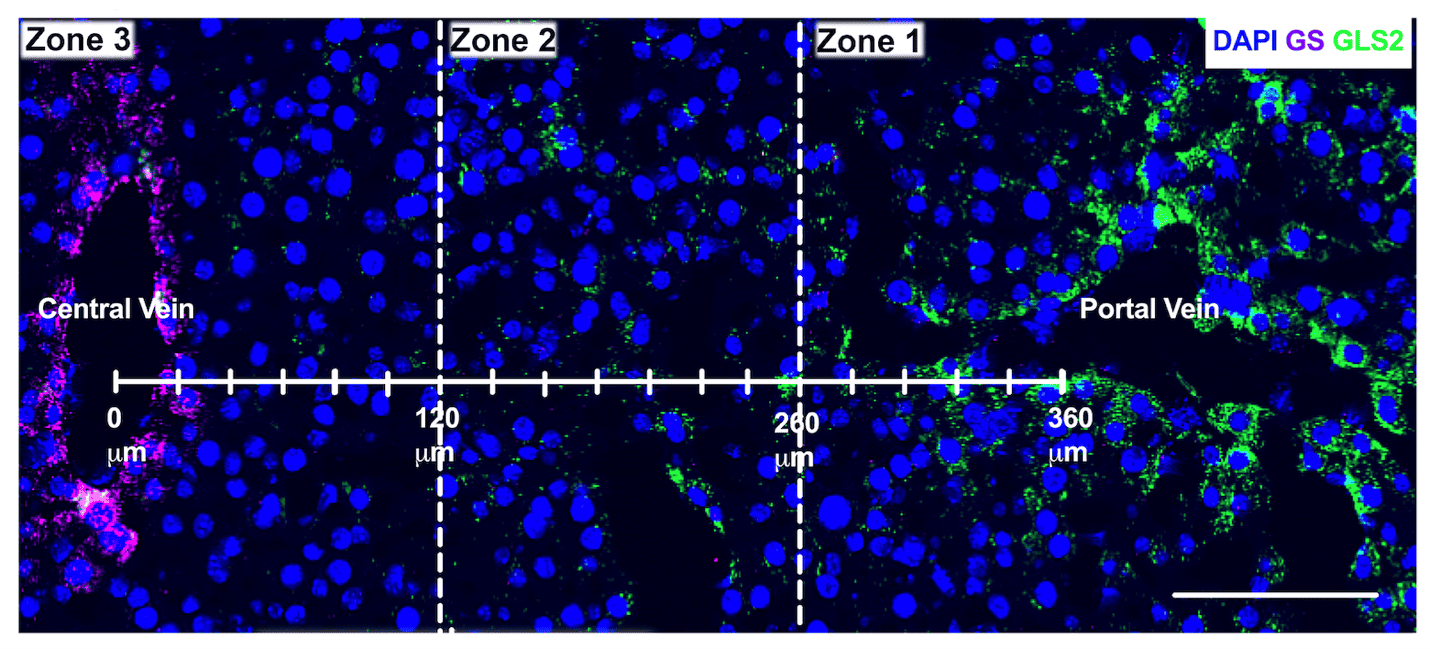Indica Labs Announces Webinar for October
Date: 12 October 2023
Time: 8:00 am PDT | 11:00 am EDT | 16:00 BST
Location: Webinar
SUMMARY
While spatial compartmentalization of gene expression has been mainly studied during development, increasing evidence shows that unique expression patterns are maintained throughout adulthood. Yet, considerably less known is known about how or why different cell populations maintain their distinct spatial organizations in adult tissues. Indeed, compartmentalization of gene expression is integral for defining the functional properties of tissues.
Freyberg and colleagues have employed multiplex fluorescent in situ hybridization (FISH) via RNAscope to dissect cell type-specific patterns of gene expression across three adult tissues: liver, pancreas, and brain. Importantly, the HALO® FISH module was used to quantitatively analyze cell-type-specific patterns of gene expression in two- and three-dimensions across different metabolic zones of liver, the striatal region of brain, and in pancreatic islets. In brain, the Spatial Analysis module generated heat maps of gene expression to identify the three-dimensional distributions of striatal cell subpopulations. In pancreatic islets, the Tissue Classifier module quantified anatomically-driven differences in the distributions of several cell types. Overall, using HALO to spatially resolve broader patterns of gene expression across different tissues has led to the discovery of new cell populations. The capabilities provided by these HALO modules has also created new links between spatial differences in gene expression and functionally distinct tissue regions to generate new biological insights for current projects.
LEARNING OBJECTIVES
- Learn how to use the HALO FISH module to analyze cell-type-specific spatial transcriptomics data across different tissues
- Learn how to use HALO Tissue Classifier module to spatially resolve different tissue subtypes in human pancreas
- Learn how to use HALO Spatial Analysis module to identify cell-type-specific expression patterns across three-dimensional gradients in brain
PRESENTER
Associate Professor
Departments of Psychiatry and Cell Biology
University of Pittsburgh
Zachary Freyberg, MD, PhD is an Associate Professor of Psychiatry and Cell Biology at the University of Pittsburgh. He received his undergraduate B.S. degree at Yale University in Molecular Biophysics & Biochemistry and subsequentlyreceived both MD and PhD degrees at the Albert Einstein College of Medicine. Zachary then continued his clinical training in psychiatry at Cornell followed by postdoctoral research training at Columbia. Since joining the faculty at the University of Pittsburgh, Zachary and his laboratory have used a combination of genetic, pharmacological, and imaging approaches to study the molecular mechanisms of dopamine signaling across multiple levels both in the brain and in the periphery. He has established workflows enabling quantitative spatial analysis of multiplex RNAscope in situ hybridization data across several organ systems from liver to pancreas to brain using HALO software (Indica Labs).
Source: Indica Labs
- Related Categories:
- Artificial Intelligence
- Digital Pathology News
- Education
- Image Analysis
- Webinars
next article
Indica Labs’ HALO AP Dx digital pathology platform for primary diagnostics has received FDA 510(k) clearance with Leica Biosystems’ Aperio GT 450 DX Scanner and is cleared for use with both SVS and DICOM file formats. ALBUQUERQUE, NM,...

































